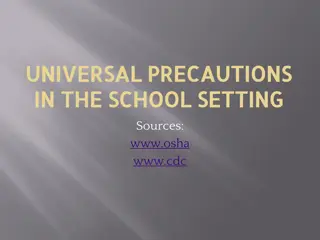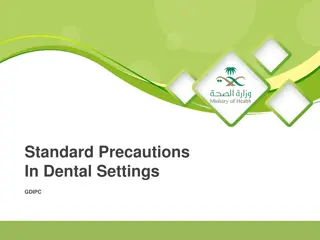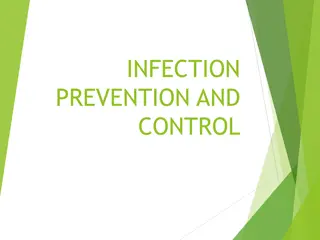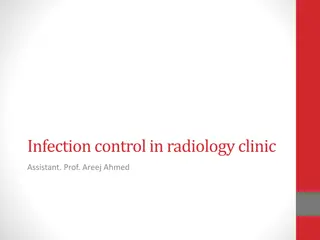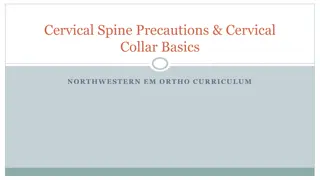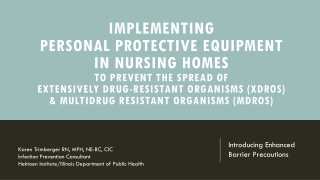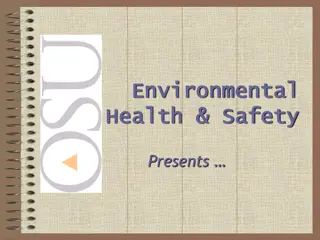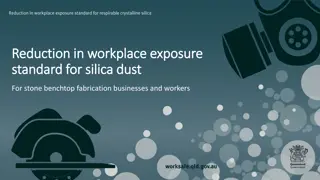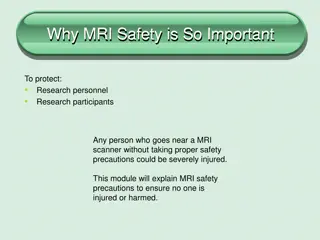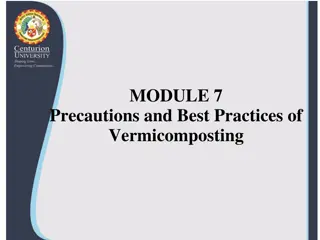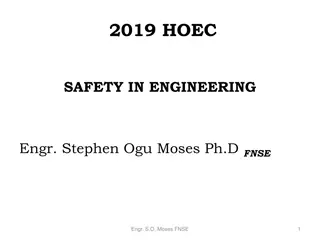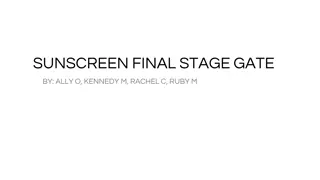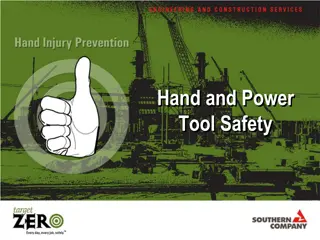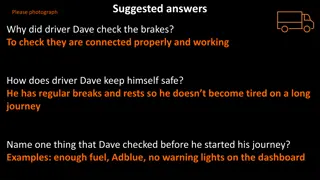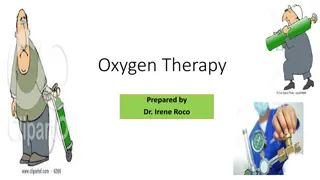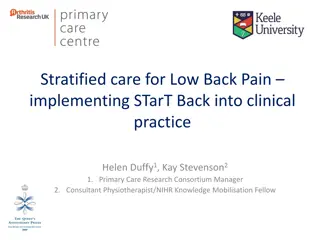Back to Basics: Standard Precautions
Importance of standard precautions and hand hygiene in preventing healthcare-associated infections and promoting patient safety. Explore the impact of implicit bias on healthcare disparities.
- standard precautions
- hand hygiene
- implicit bias
- patient safety
- healthcare diversity
- healthcare disparities
- infection prevention
Download Presentation

Please find below an Image/Link to download the presentation.
The content on the website is provided AS IS for your information and personal use only. It may not be sold, licensed, or shared on other websites without obtaining consent from the author. Download presentation by click this link. If you encounter any issues during the download, it is possible that the publisher has removed the file from their server.
E N D
Presentation Transcript
1 HEALTHCARE-ASSOCIATED INFECTIONS PROGRAM Back to Basics: Standard Precautions Project Firstline Healthcare-Associated Infections Program Center for Health Care Quality California Department of Public Health
2 HEALTHCARE-ASSOCIATED INFECTIONS PROGRAM Implicit Bias Describes how our unconscious attitudes or judgements can influence our thoughts, decisions, or actions Includes involuntary, unintentional perceptions made without awareness Occurs as our brains sort information and perceive data to understand our world Affects our decisions, contributing to societal disparities Self awareness about implicit bias can promote healthcare diversity and equality Learn more about your own implicit bias at Project Implicit (implicit.harvard.edu/implicit/)
3 HEALTHCARE-ASSOCIATED INFECTIONS PROGRAM
4 HEALTHCARE-ASSOCIATED INFECTIONS PROGRAM Objectives List the 6 elements of Standard Precautions Describe how hand hygiene plays a vital role in every element of Standard Precautions
5 HEALTHCARE-ASSOCIATED INFECTIONS PROGRAM Keeping Germs From Spreading Source Transmission Host CNA gets germs on their hands CNA touches Resident B with unwashed hands Resident A
6 HEALTHCARE-ASSOCIATED INFECTIONS PROGRAM What Are Standard Precautions? Use all the time, in all settings 1. Hand hygiene 2. Environmental cleaning and disinfection 3. Injection and sharps safety 4. Appropriate personal protective equipment (PPE) based on activities being performed 5. Respiratory hygiene and cough etiquette 6. Reprocessing of reusable medical devices
7 HEALTHCARE-ASSOCIATED INFECTIONS PROGRAM ELEMENT #1: HAND HYGIENE
8 HEALTHCARE-ASSOCIATED INFECTIONS PROGRAM CNAs Touch Many Surfaces
9 HEALTHCARE-ASSOCIATED INFECTIONS PROGRAM Reflection: Hand Hygiene Hands are the most common mode of transmission of germs Perform hand hygiene for at least 20 seconds to keep your hands clean and stop the spread of infections. Clean hands save lives. What are the two methods to properly clean your hands?
10 HEALTHCARE-ASSOCIATED INFECTIONS PROGRAM Hand Hygiene Hands are the most common mode of transmission of germs Perform hand hygiene for at least 20 seconds to keep your hands clean and stop the spread of infections. Clean hands save lives. Soap and Water Alcohol-Based Hand Rub (ABHR)
11 HEALTHCARE-ASSOCIATED INFECTIONS PROGRAM Perform Hand Hygiene for at Least 20 Seconds In one 12-hour shift, CNA touch about 912 surfaces When you move from resident room to another, you can spread germs if you do not perform proper hand hygiene The less time you wash, the less germs you will remove and the higher the chance of infections spreading
12 HEALTHCARE-ASSOCIATED INFECTIONS PROGRAM What Hand Hygiene Method to Use ABHR Soap and Water Not visibly soiled Before and after eating Upon entry and exit of every resident room Donning and doffing gloves Before and after accessing devices Contaminated Visibly soiled Before and after eating After using the restroom After contact with residents with C. difficile or norovirus Contact with bodily fluids, etc.
13 HEALTHCARE-ASSOCIATED INFECTIONS PROGRAM Knowledge Check When is hand hygiene needed? (Select all that apply) A. Before entering a room B. Before any aseptic procedure C. After contact with bodily fluids D. After leaving a resident room E. After touching a residents surroundings
14 HEALTHCARE-ASSOCIATED INFECTIONS PROGRAM Knowledge Check When is hand hygiene needed? (Select all that apply) A. Before entering a room B. Before any aseptic procedure C. After contact with bodily fluids D. After leaving a resident room E. After touching a residents surroundings
15 HEALTHCARE-ASSOCIATED INFECTIONS PROGRAM Every Moment Matters! Your 5 moments for hand hygiene 5. After touching a resident s surroundings 1. Before entering a resident room 2. Before any aseptic procedure 4. After leaving a resident room 3. After contact to body fluids World Hand Hygiene Day, World Health Organization (www.who.int/campaigns/world-hand-hygiene-day)
16 HEALTHCARE-ASSOCIATED INFECTIONS PROGRAM Hand Hygiene with ABHR 1. Apply ABHR to the palms of hands 2. Rub hands together covering all surfaces until dry. Get between fingers, fingernails, on the front and back of hands, thumbs and wrists. Note: Amount of product is based on manufacturer s recommendation
17 HEALTHCARE-ASSOCIATED INFECTIONS PROGRAM
18 HEALTHCARE-ASSOCIATED INFECTIONS PROGRAM
19 HEALTHCARE-ASSOCIATED INFECTIONS PROGRAM Hand Hygiene Scenario 1. Performs hand hygiene 3. Dons gloves 2. Enters room 6. Performs hand hygiene 4. Changes bed pan 5. Doffs gloves
20 HEALTHCARE-ASSOCIATED INFECTIONS PROGRAM Hand Hygiene Scenario 1. Performs hand hygiene 3. Dons gloves 2. Enters room 6. Performs hand hygiene 4. Changes bed pan 5. Doffs gloves
21 HEALTHCARE-ASSOCIATED INFECTIONS PROGRAM ELEMENT #2: ENVIRONMENTAL CLEANING AND DISINFECTION
22 HEALTHCARE-ASSOCIATED INFECTIONS PROGRAM Environmental Cleaning and Disinfection We all play a part in making sure the environment stays clean for the safety of all in the facility A thorough cleaning must occur before a surface can be disinfected Cleaning: removal of all visible and invisible soil Disinfection: destruction of germs on a non- living surface
23 HEALTHCARE-ASSOCIATED INFECTIONS PROGRAM Contact/Wet Times The time required for a disinfectant to kill microorganisms on a pre-cleaned surface (clean area or item first) The disinfectant must remain wet long enough to achieve the claimed level of surface disinfection Follow manufacturer s guidelines for achieving the appropriate contact/wet time Perform hand hygiene after cleaning a surface
24 HEALTHCARE-ASSOCIATED INFECTIONS PROGRAM ELEMENT #3: INJECTION AND SHARPS SAFETY
25 HEALTHCARE-ASSOCIATED INFECTIONS PROGRAM Safe Sharps Disposal = No Spread of Infection Bloodborne infections can be prevented with proper injection safety and proper sharps disposal If you are stuck by a used needle, report it per facility policy If you see a used syringe, dispose of it safely Be mindful of the environment Drop item in sharp part first If you see a sharps container filled pass the marked line, or a needle sticking out, act immediately and report it to charge nurse or person in charge of disposal Perform hand hygiene after disposing of needles and changing sharps containers Sharps Safety for Healthcare Settings (www.cdc.gov/sharpssafety/tools.html)
26 HEALTHCARE-ASSOCIATED INFECTIONS PROGRAM ELEMENT #4: PERSONAL PROTECTIVE EQUIPMENT (PPE)
27 HEALTHCARE-ASSOCIATED INFECTIONS PROGRAM Use Appropriate PPE PPE includes: Facemask/ Respirator Gown Gloves Face shield/Goggles Determine PPE based on the resident care you will be performing Consider: potential for exposure to blood, body fluids or other infectious material
28 HEALTHCARE-ASSOCIATED INFECTIONS PROGRAM PPE and Hand Hygiene DOs Perform hand hygiene before donning PPE Perform hand hygiene after doffing PPE Perform hand hygiene after every removal of gloves DON Ts X Do not wash or reuse gloves X Do not double glove or double gown
29 HEALTHCARE-ASSOCIATED INFECTIONS PROGRAM ELEMENT #5: RESPIRATORY HYGIENE AND COUGH ETIQUETTE
30 HEALTHCARE-ASSOCIATED INFECTIONS PROGRAM Respiratory Hygiene and Cough Etiquette Infection prevention practices to reduce the spread of respiratory pathogens spread by droplet and airborne transmission. Cover your mouth and nose when sneezing or coughing Use and properly throw away tissues Perform hand hygiene every time you touch your nose, mouth, or face
31 HEALTHCARE-ASSOCIATED INFECTIONS PROGRAM Educate Residents, Visitors, and Staff Teach your residents and visitors to maintain proper respiratory hygiene and cough etiquette Wash your hands with soap and water or use ABHR Sneezing and coughing can make others sick Sneeze into tissue Sneeze into elbow Perform hand hygiene
32 HEALTHCARE-ASSOCIATED INFECTIONS PROGRAM Knowledge Check For the safety of your residents and fellow staff, what is something you could do to protect everyone? (Select all that apply) A. Shake their hand and tell them it s ok B. Educate them C. Ask them to help you change the residents' clothes D. Hug them and thank them for coming to visit the resident
33 HEALTHCARE-ASSOCIATED INFECTIONS PROGRAM Knowledge Check For the safety of your residents and fellow staff, what is something you could do to protect everyone? (Select all that apply) A. Shake their hand and tell them it s ok B. Educate them C. Ask them to help you change the residents' clothes D. Hug them and thank them for coming to visit the resident
34 HEALTHCARE-ASSOCIATED INFECTIONS PROGRAM ELEMENT #6: REUSABLE DEVICE REPROCESSING
35 HEALTHCARE-ASSOCIATED INFECTIONS PROGRAM Device Reprocessing Device reprocessing is a multi-step process that includes cleaning and disinfecting of a reusable medical device, such as: Blood pressure cuffs Thermometers and other point-of-care devices Walkers Maintain separation between clean and soiled devices to prevent the spread of infection
36 HEALTHCARE-ASSOCIATED INFECTIONS PROGRAM Hand Hygiene and Reusable Devices Using Devices Cleaning and Disinfecting Devices 1. Perform hand hygiene 2. Clean device 3. Disinfect device 4. Perform hand hygiene 1. Perform hand hygiene 2. Use device 3. Perform hand hygiene
37 HEALTHCARE-ASSOCIATED INFECTIONS PROGRAM Highlights Standard Precautions should be used at all times, in all healthcare settings Hand hygiene for at least 20 seconds plays a vital role in every element of Standard Precautions to prevent the spread of infection Using proper PPE can protect you from spreading infections to your residents Follow listed contact/wet times for cleaning and disinfecting surfaces and medical equipment
38 HEALTHCARE-ASSOCIATED INFECTIONS PROGRAM References Clean care for all- it s in your hands | World Health Organization (WHO) (www.who.int/campaigns/world-hand-hygiene-day) Clean Hands: Combat COVID-19! | Centers for Disease Control and Prevention (CDC) (www.youtube.com/watch?v=xmYMUly7qiE) Hand Hygiene in Healthcare Settings | CDC (www.cdc.gov/handhygiene/index.html) Healthcare-Associated Infections Program | California Department of Public Health (CDPH) (www.cdph.ca.gov/Programs/CHCQ/HAI/Pages/HAIProgramHome.aspx)
39 HEALTHCARE-ASSOCIATED INFECTIONS PROGRAM QUESTIONS AND DISCUSSION
40 HEALTHCARE-ASSOCIATED INFECTIONS PROGRAM Project Firstline Resources Visit the Project Firstline Website (www.cdph.ca.gov/Programs/CHCQ/HAI/Pages/ProjectFirstline.aspx) Subscribe to CNA Today A Newsletter for CNA! (cdph-marketing.powerappsportals.com/HAI/HAI-Registration/) Email the Project Firstline AskBox ProjectFirstline@cdph.ca.gov Project Firstline is a national collaborative led by the U.S. Centers for Disease Control and Prevention (CDC) to provide infection control training and education to frontline healthcare workers and public health personnel. The California Department of Public Health Healthcare-Associated Infections (HAI) Program is proud to partner with Project Firstline, as supported through Strengthening HAI/AR Program Capacity (SHARP) funding. CDC is an agency within the Department of Health and Human Services (HHS). The contents of this presentation do not necessarily represent the policies of CDC or HHS and should not be considered an endorsement by the Federal Government.



